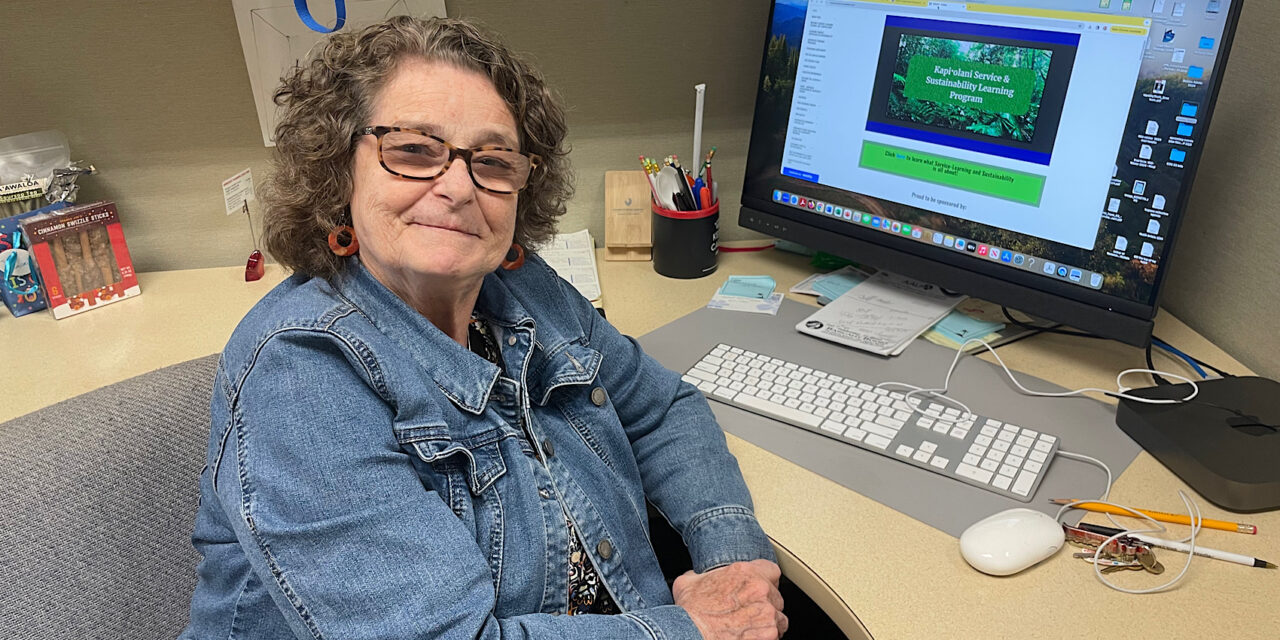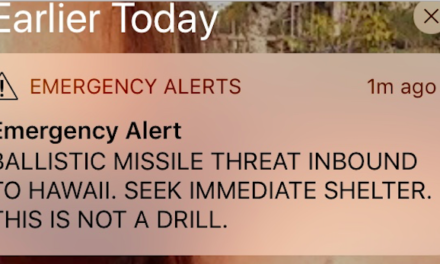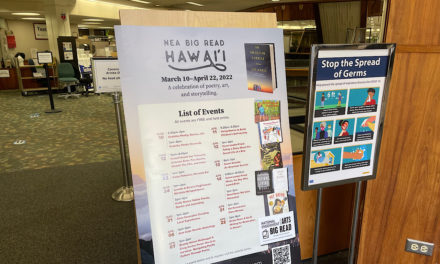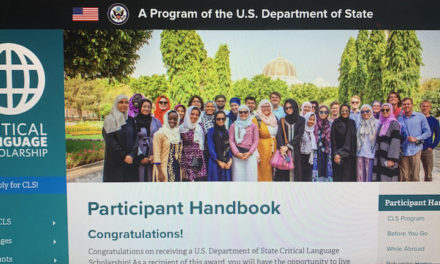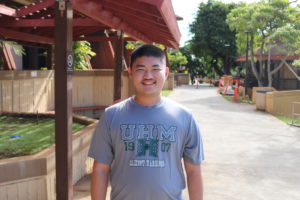Service-learning students work with Denise Pierson, the Civic and Community Engagement Outreach Coordinator for the program, on the second floor of the ‘Iliahi building on campus. (Photo by Shawna Takaki)
By Shawna Takaki | Staff Writer
The KSSL Service & Sustainability Learning Program creates an environment for students to partake in community engagement in many different areas, such as elder care, environmental awareness and sustainability, resilient neighborhoods, community health and public safety, and more. The program helps students develop their leadership skills and build their resume.
A crucial fact about the program is that students are required to be eligible for federal work-study in order to partake in the program, requiring students to have filled out the FAFSA. After that, before beginning their service-learning experience, all students undertake an orientation with Pierson at the beginning of the semester, held over Zoom.
Afterward, work begins, with students becoming pathway leaders. They choose what they’d like to focus on, such as helping with nursing students, working with the food pantry, doing hands-on work at the Māla Māunuunu where people work with native flora, and doing service with outside community partners located all over the island.
“I start my students out at around $16.50 an hour to start, so you’re getting a good pay,” said Pierson.
How working as a service-learning student differs from outside work and can be an amazing benefit for students is that there is a greater flexibility for hours worked, as well as a focus on student development.
“What we pride ourselves on here at the Service and Sustainability Learning Program is the fact that we can customize your hours and your time here with your personal schedule, like courses, labs, and all external things you need to do,” said Pierson.
One service learning student chose to work with the Susannah Wesley Community Center, holding a used shoe drive and collecting around two hundred pairs of shoes to donate to the community center. OluKai slippers reached out and offered to donate a warehouse full of shoes in storage, providing a steady supply of shoes for families in Kahili. Other students are working on connecting with hotels in Waikīkī to supply linens and toiletries to the center as well.
“That’s one thing that happened just because one student decided to hold a shoe drive,” said Pierson. “He found out that a lot of the kids … share tennis shoes to play basketball. He was volunteering over there and realized, these shoes don’t have any shoes … so I gotta do something about it.”
Students can supply their own ideas, stemming in their own personal interests, to help out the greater community. Many service-learning students also work with CERENE, the Center for Resilient Neighborhoods, a community-based applied research center on campus creating community resilience hubs around the island.
At the end of the semester, students write reflection essays based on their experiences working with the program and how they’ve worked on their Sustainable Development Goals. There’s an associated KELA award, and service learning students who write exceptional essays also get $300 for writing the essay.
Anyone interested can learn more at the website here, which is also managed by students working with the program.
“You can get a meaningful experience, and interact with the campus, and your peers,” said Pierson. “Students can … take advantage of all the resources and all the opportunities to build their resume and develop their skills, so when they get out in the real world, they’ll have … the proper mindset to be prepared to face the world as a new college graduate.”

